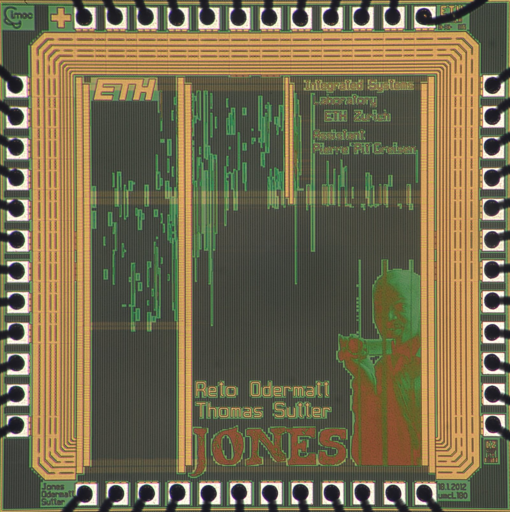The IIS Chip Gallery
Jones (2011)

Additional pictures below, click to see larger versions

by


| Application | Graphics |
| Technology | 180 |
| Manufacturer | UMC |
| Type | Semester Thesis |
| Package | QFN56 |
| Dimensions | 1525μm x 1525μm |
| Gates | 100 kGE |
| Voltage | 1.8 V |
| Power | 101 mW, 162MHz 1.8V |
| Clock | 193 MHz |
Line detection in images is useful for various applications in image processing and computer vision. A popular line detection algorithm is based on the Hough transform. The Hough transform uses a parametrized representation of lines, that allows to replace the line search in the original image with a maximum search in the Hough space. That is, coordinates from the input image are transformed into sinusoidal curvers in Hough space that intersect if points ly on the same line.
This ASIC uses the Hough transform to extract lines from video sequences. In a first step, a binary edge map is extracted that provides line candidates. Next, each candidate point is transformed into Hough space with a CORDIC for the sinusoidal terms.The obtained Hough points are accumulated in a large 2D array (SRAM macro) to produce the Hough space representation of the input image. Finally, the maximal accumulation scores above a certain threshold are the detected lines.
The ASIC has been sent for fabrication in a 180 nm CMOS process and can process image sequences of resolutions up to 1024x1024 at 60 frames per second.